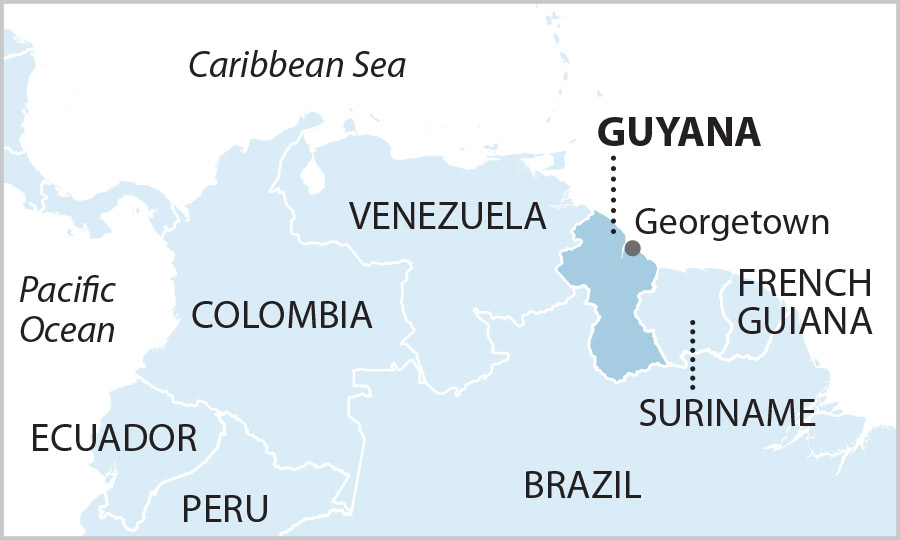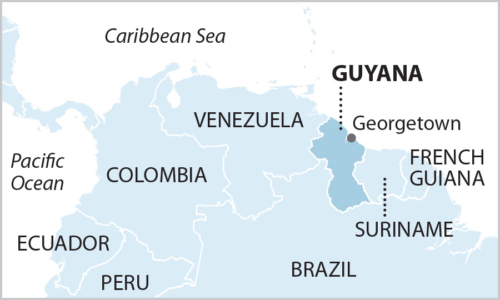IEEFA report: Oil consortium deal with Guyana far from panacea for country’s ailing finances

 October 27, 2020 (IEEFA) — A multibillion-dollar partnership between the republic of Guyana and a consortium led by some of the world’s largest oil and gas companies will not yield enough cash over the next five years for Guyana to close deficits, support new spending and build a Sovereign Wealth Fund.
October 27, 2020 (IEEFA) — A multibillion-dollar partnership between the republic of Guyana and a consortium led by some of the world’s largest oil and gas companies will not yield enough cash over the next five years for Guyana to close deficits, support new spending and build a Sovereign Wealth Fund.
Beyond five years, the market outlook for the oil and gas industry and particularly for the lead company ExxonMobil, is negative, according to a new report by the Institute for Energy Economics and Financial Analysis (IEEFA).
The 2016 deal between ENH—a consortium of ExxonMobil, China National Offshore Oil Company (CNOOC) and Hess—and Guyana calls for “profit oil” to be divided evenly between Guyana and the consortium.
Based on IEEFA’s review of the contract and its own revenue projections over the next five years, the study finds that Guyana will:
- experience total cash losses in their annual budget of $160 million;
- need to borrow $482 million to pay for annual expenses as the revenue from the oil and gas reserves is volatile and too low to cover costs in 2021, 2022, 2023;
- owe $20 billion in development costs to the oil companies at the end of five years, and
- rely upon ExxonMobil, a declining global company in an unstable and shrinking industry.
“This is a cautionary tale. The receipt of new revenues is welcome news to a government under any circumstances,” said Tom Sanzillo, IEEFA director of finance and author of the report. “The news is particularly welcome when a government is facing economic and fiscal stress. But questions need to be asked and answered. For Guyana near-term annual budget revenues will be weak, high development costs owed to oil companies will take years to pay off, the hope for a healthy Sovereign Wealth Fund unlikely and longer term oil and gas prices will fall far below historical averages.”
Although Guyana will receive revenue each year, it will incur large expenses to generate that revenue. These large expenses, owed to oil and gas companies must be reimbursed before the country enjoys any long-term benefits. In the first five years, the revenue to Guyana will be curtailed by these large expenses, a downturn in global oil and gas markets and, in the first year, technical problems that caused ExxonMobil to miss its production targets.
The IEEFA study found that oil revenues won’t cover Guyana’s annual budget deficit over the next three years and meet its pledge to build a Sovereign Wealth Fund. This will lead to a shortfall of $482 million in the first three years. Even with a predicted improvement in oil prices in the fourth and fifth year, the aggregate five-year annual cash deficit still is likely to be $160 million. The tight fiscal conditions will make it difficult for Guyana to support new spending.
Three factors affect the amount of “profit oil” received by Guyana: The price of oil, which has ranged from a recent high of $84 per barrel (bbl) to a low of $9/bbl; the volume of oil produced and sold; and recoverable costs that determine the amount of “profit oil,” such as development costs, operating expenses, interest and parent company expenses. Low prices and market oversupply for the foreseeable future, and the high cost of developing Liza and Payara and the other fields, cloud Guyana’s expectation of future abundance.
Beyond five years, the outlook for the oil and gas industry is largely negative. New, long-term global market and political forces have created a permanent oversupply of oil and gas, low prices and new competitors that will keep markets unstable and partners like ExxonMobil unreliable. Norway, a country that in the past achieved great financial success from oil and gas ownership is now facing a long-term structural decline in its revenue from its reserves.
The oil and gas industry is in a state of financial decline. The industry has suffered from low demand and low prices even before the coronavirus pandemic devastated the global economy. It commanded 29 percent of the Standard & Poor’s 500 index in 1980; now, it makes up only 2.3 percent.
ExxonMobil, the lead partner in the ENH consortium, is in particularly dire straits. The Texas-based company’s market capitalization was $527 billion in 2007; it’s currently less than $150 billion. Exxon has been removed from the Dow Jones Industrial Average for the first time in a century and may have to write off a fifth of its reserves by the end of the year.
“Modest amounts of new annual revenues in today’s environment create tough choices for Guyana,” Sanzillo said. “Missteps now will mean that at the end of five years the country will have spent its modest revenues, incurred more debt, will face persistent annual deficits and have put away little in its Sovereign Wealth Fund.”
Full report: Guyana’s Oil Deal: Promise of Quick Cash Will Leave Country Shortchanged
Author Contact
Tom Sanzillo ([email protected]) is IEEFA’s director of finance.
Media Contact
Vivienne Heston ([email protected]), +1 (914) 439-8921
About IEEFA
The Institute for Energy Economics and Financial Analysis (IEEFA) examines issues related to energy markets, trends and policies. The Institute’s mission is to accelerate the transition to a diverse, sustainable and profitable energy economy.











